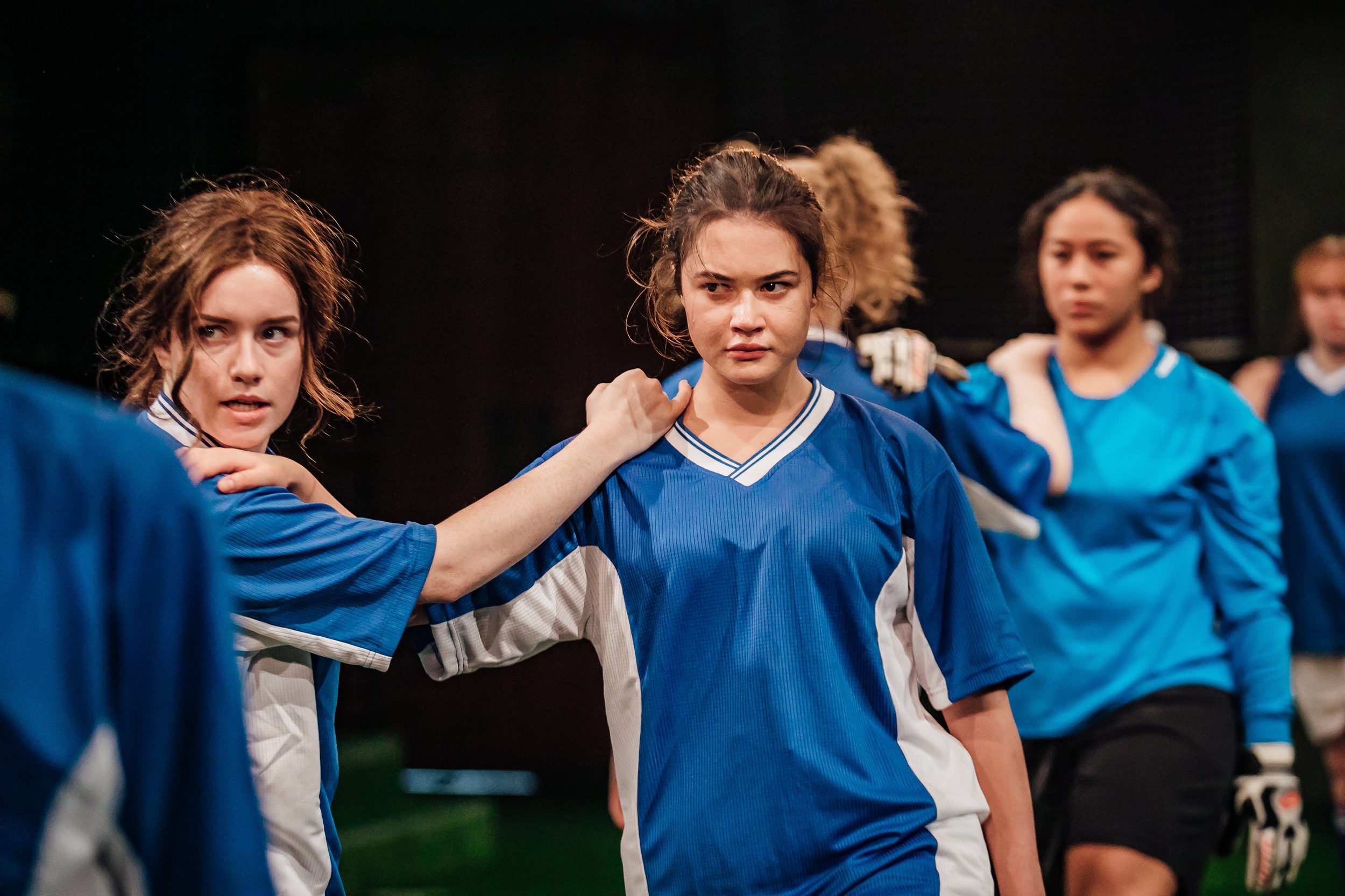The Wolves
A common misconception, the lone wolf is not always one which prefers a life of solitude. Traditionally a pack animal, what the independent seeks, more often than not, is a partner, and a new pack. As for many animals, tribes are integral to our behavioural development, and the social network of sports is one of the most common methods used. But for every eleven pairs of studded boots that tear divots on a Saturday morning, there are silent lips reciting Caryl Churchill or Sarah Kane, waiting for their chance to speak aloud. It’s not often that a prominent theatre company presents a work aimed at giving space to young women, or when it is, it’s often lip service at best. By earnestly engaging in this practice, Silo Theatre has not only struck gold, but also proven the attention deserved and artistic merit of our younger practitioners through a cast of nine exceptional actresses.
For all but two, The Wolves marks their professional stage debut, but you wouldn’t know that based on their performances. There are actors who have worked on stage for decades and not reached this level of authenticity, but to suggest the cast are only succeeding in their craft at a level beyond their years would be to insult that they are also quite simply bringing all that they are to these roles. This is the fundamental reason why The Wolves is such an important work. It allows women to be women.
This aforementioned authenticity begins, as it always does, with playwright Sarah DeLappe’s text. Writing nine voices is no mean feat, and the multiple and honest perspectives DeLappe provides allows the cast to construct their characters, not only from the words they say, but the topics they discuss. There is no stereotypical reduction to boys and periods (though these subjects do arise). Instead, we hear young women philosophising on politics, from genocide to immigration, as they navigate the dynamics of their relationships. The result is that the audience are presented with fully-formed characters and motivations that are deeply layered. Not even small talk is off the cuff, because every line tells us something about someone.
But to simply say words on stage does not an actor make, and while there is some inconsistency in the evocation of delivery, this is a minor and singular discrepancy in an otherwise flawless set of performances. This is because what director Sophie Roberts has imbued in her cast, more importantly, is an acute sense of the use of space and the temporality of the characters’ respective and collective journeys, which, in addition to Christopher Stratton’s costume design, allows them to present these characters with lives that exist both on and off the stage. And each of these young actresses absolutely owns them. I simply cannot imagine anyone other in any of these roles.
They say casting is 90% of a director’s job. If so, Roberts has mined the remaining ten for every decimal. From the moment Sean Lynch’s lights hit Ruby Read’s set, the pace is exquisitely established, and the beats between the scenes and within the units are definitively yet subtlety marked, allowing the moments between both them and the actresses to resonate beyond linguistic restriction. It is the fundamental reason why we see a production rather than simply read the script. Vignettes punctuate the narrative progression, with sound design (also Lynch) evoking a near physical response, as the events of the play, and the characters themselves, slowly begin to unravel.
It is this skill in the art of the reveal that DeLappe, Roberts, and the cast are able to execute, which makes Silo’s production so much more than the sum of its parts. Certain themes and events that plague young women are seeded throughout, yet never directly mentioned, striking deep with minimal force. Every woman should see this show, and every parent of women should take them. It may not be easy, but it will be worth it, because these wolves are out for blood, and their primal howls, which haunt the Q Loft long after the audience have left, will continue to echo through the history of New Zealand theatre.

